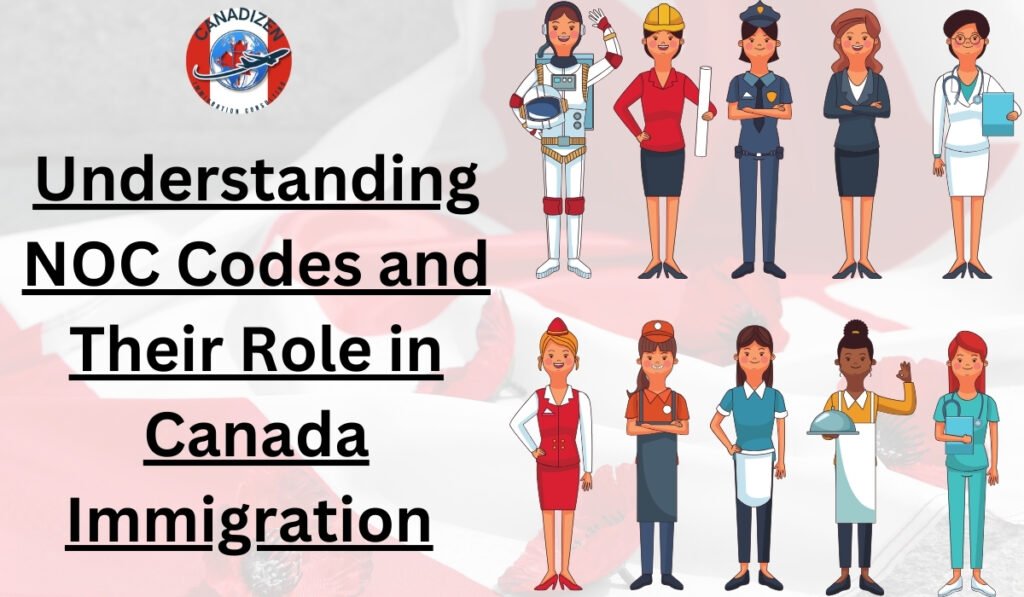When applying for immigration to Canada, particularly through programs like Express Entry, the National Occupational Classification (NOC) plays a crucial role. The NOC system categorizes occupations based on the type of job duties and the work a person does.
This guide will explore what NOC codes are, why they are essential, and how they impact immigration applications under various programs.
What Are NOC Codes?
The National Occupational Classification (NOC) is a standardized system developed by the Canadian government to classify jobs based on skill levels, job duties, and required training.
Each occupation in Canada is assigned a five-digit code under the 2021 NOC system (previously four digits). These codes are used to identify:
- Job Title
- Primary Duties
- Employment Requirements
NOC Codes in Express Entry
In the Express Entry system, candidates must select the NOC code that aligns with their work experience. This selection impacts eligibility and CRS (Comprehensive Ranking System) scores.
Key points to consider:
- Eligibility: To qualify, applicants must select a job listed under Training, Education, Experience, and Responsibilities (TEER) categories 0, 1, 2, or 3 in the NOC system.
- Points Allocation: Express Entry assigns points for work experience, and the accuracy of your chosen NOC code determines how this experience is evaluated.
- Proof of Work Experience: You must provide supporting documents, like reference letters, that align with the selected NOC code’s job duties.
Importance of Choosing the Right NOC Code
1. Determining Program Eligibility
Different immigration programs have specific NOC requirements. For instance:
- Federal Skilled Worker Program (FSWP): Requires at least one year of work experience in TEER 0, 1, 2, or 3 occupations.
- Federal Skilled Trades Program (FSTP): Requires experience in skilled trades under specific NOCs.
- Canadian Experience Class (CEC): Work experience must match TEER categories.
2. Provincial Nomination Programs (PNPs)
Many provinces use NOC codes to identify in-demand occupations. Selecting the right NOC can enhance your chances of receiving a provincial nomination, which boosts your CRS score by 600 points.
3. Avoiding Application Rejection
Choosing an incorrect NOC code or failing to provide documents supporting your selected code can lead to delays or outright rejection.
How to Find the Correct NOC Code
1. Use the NOC Search Tool
Visit the official Government of Canada NOC website to search for your occupation. Use keywords or job titles to find matching codes.
2. Review the Job Description
Ensure the primary duties listed in the NOC align with your actual job responsibilities.
- Example: If you work as a software engineer, your duties should match those listed under NOC 21231 – Software Engineers and Designers (2021 NOC system).
3. Match Employment Requirements
Your qualifications and work history should meet the requirements stated in the NOC description.
NOC and Other Immigration Programs
-
Temporary Foreign Worker Program (TFWP)
Employers hiring foreign workers must reference NOC codes to determine if an LMIA (Labour Market Impact Assessment) is required. -
Atlantic Immigration Program (AIP)
This program uses NOC codes to assess if an applicant’s work experience aligns with the job being offered. -
Family Sponsorship
NOC codes are used to evaluate the job qualifications of sponsors or applicants.
Recent Changes to the NOC System (2021 Update)
The transition from the old Skill Level System (0, A, B, C, D) to the TEER system (0-5) brought significant changes.
- TEER 0: Managerial roles.
- TEER 1: Jobs requiring university degrees.
- TEER 2: Roles needing college diplomas or apprenticeships.
- TEER 3: Jobs requiring post-secondary education or on-the-job training.
- TEER 4 & 5: Low-skilled occupations (typically ineligible for Express Entry).
Common Mistakes When Using NOC Codes
-
Selecting the Wrong Code
Applicants often pick codes based on job titles instead of duties, leading to mismatches.
Solution: Always match your job duties with the NOC description. -
Insufficient Proof of Work Experience
Not providing adequate documentation (e.g., reference letters) can result in rejection.
Solution: Collect detailed reference letters that outline job responsibilities matching the NOC description. -
Misrepresentation
Falsifying or exaggerating job duties to fit a specific NOC code can lead to application bans.
Solution: Be truthful and ensure all details align with your actual experience.
How Canadizen Immigration Consulting Can Help
At Canadizen Immigration Consulting, we understand the critical role NOC codes play in your immigration journey. Our team of experts can:
- Assist you in identifying the right NOC code for your experience.
- Help draft reference letters that align with IRCC requirements.
- Provide guidance on eligibility for various immigration programs.
With a 98% success rate, we’ve helped thousands of applicants achieve their Canadian immigration goals.
Conclusion
NOC codes are a cornerstone of Canada’s immigration system. Selecting the correct code ensures program eligibility, accurate evaluation of work experience, and a smooth application process.
Let Canadizen Immigration Consulting simplify the process for you. Contact us today at canadizen.com to ensure your NOC code is spot-on and maximize your chances of success!
Would you like any modifications or additional details added to this article?




